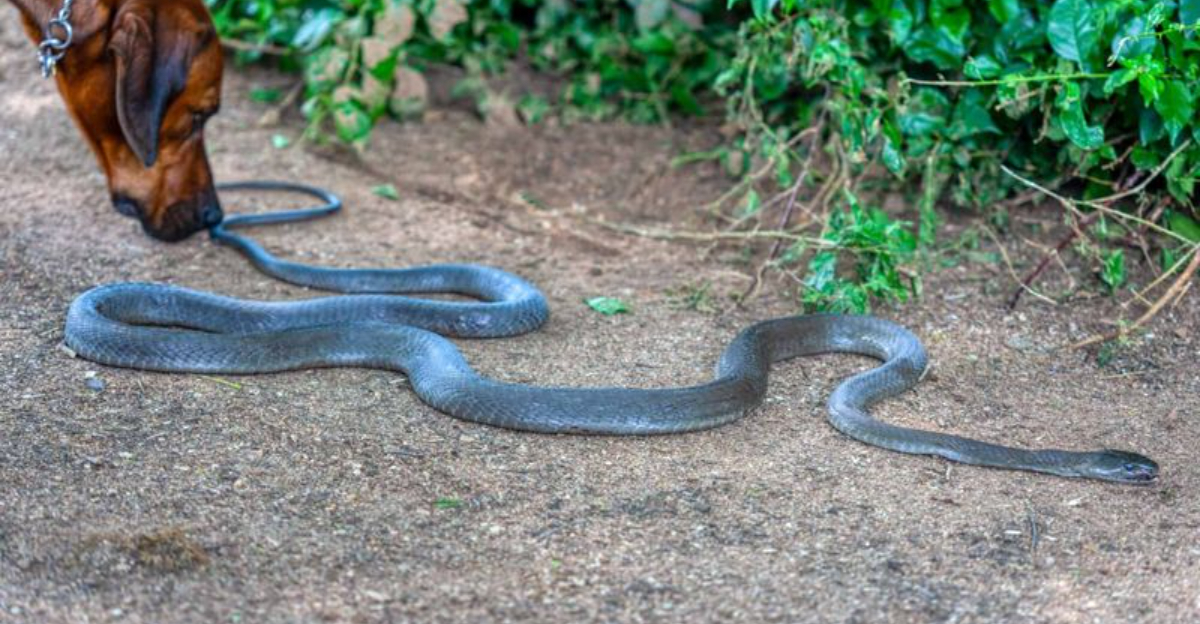Fall in Texas brings beautiful colors, cooler temperatures, and unfortunately, increased snake activity.
As a longtime Texas resident with three curious pups, I’ve learned the hard way that autumn is just as dangerous as spring when it comes to venomous snake encounters.
Dog owners need to be especially vigilant during these months since our four-legged friends often investigate with their noses first and ask questions later.
Fall Marks A Second Peak Snake Season
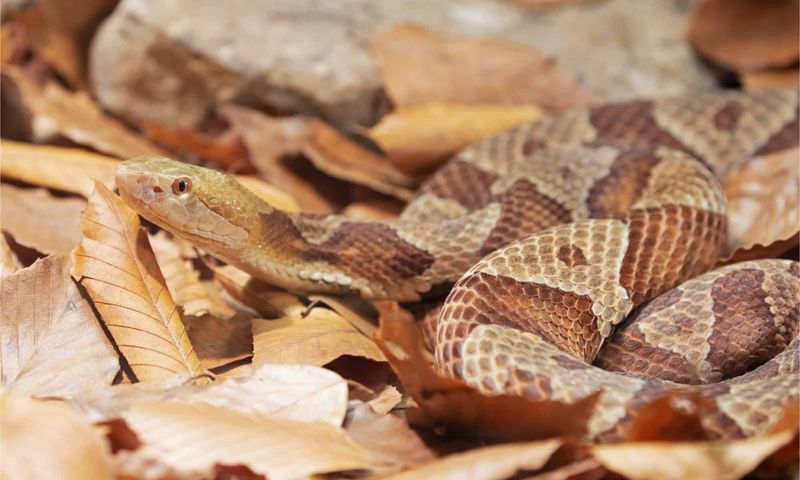
Most Texans know about spring snake dangers, but fall is equally treacherous for our furry friends. September through November creates perfect conditions for snakes seeking last meals before winter dormancy.
My neighbor’s retriever Buddy was bitten last October while romping through leaves. The vet explained that snakes become more desperate for food as temperatures drop, making them more likely to strike rather than retreat.
Unlike summer when snakes are primarily active at dawn and dusk, fall’s moderate temperatures keep them moving throughout daylight hours when we’re walking our dogs.
Daylight Hours Become Prime Snake Time
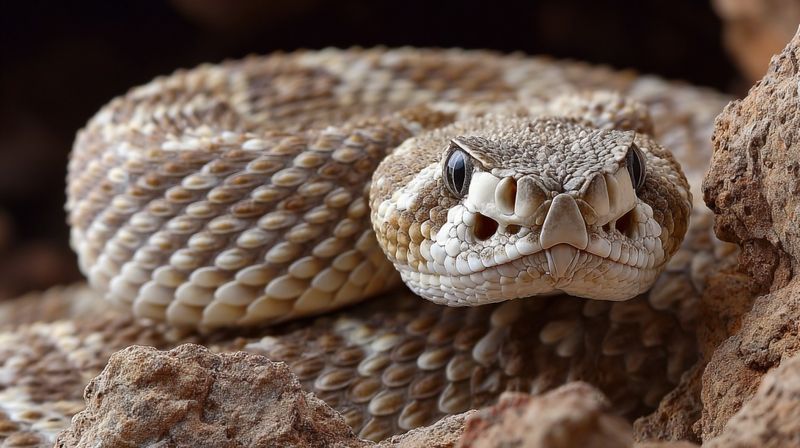
Summer’s scorching heat forces snakes to hunt primarily at night, but autumn’s cooler temperatures shift their activity patterns dramatically. Now they’re out and about precisely when you’re walking Fido around the neighborhood.
The 70-80 degree days create perfect hunting conditions for cold-blooded reptiles.
Morning walks, once relatively snake-free, become particularly risky as snakes bask in early sunlight to warm themselves after chilly nights.
Camouflage Masters In Fall Foliage
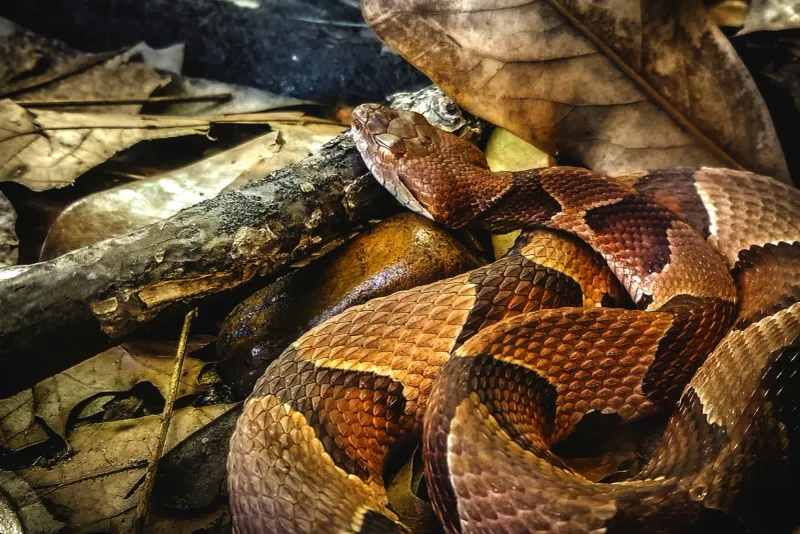
Nature played a cruel trick by making copperheads almost perfectly match fallen autumn leaves.
I once walked right past a large copperhead while hiking with my dog at Enchanted Rock. Only his sudden alert posture made me look down and spot the perfectly camouflaged snake mere inches from our path.
Even rattlesnakes, normally more visible, blend surprisingly well with dried grasses and scattered leaves. Their rattle warning becomes your best protection when eyes fail to spot them.
Your Yard Becomes Snake Central
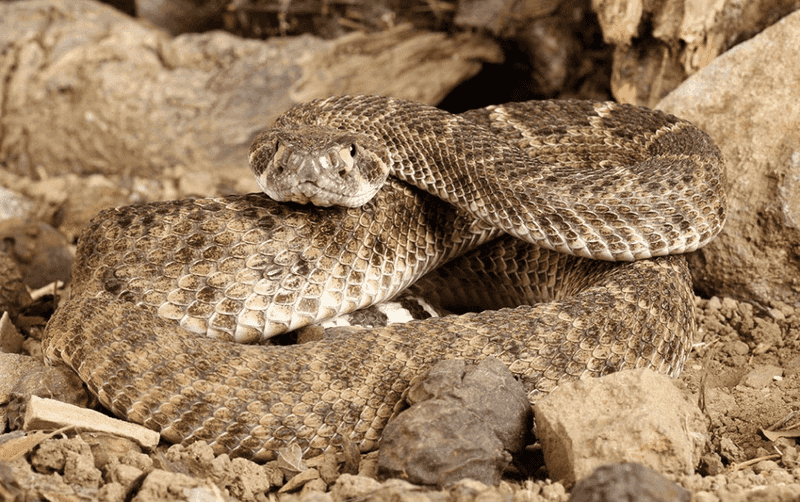
Fall yard cleanup creates perfect snake hideouts!
Those neat piles of leaves, branches, and garden debris become five-star accommodations for snakes seeking shelter.
Rodents also seek winter quarters in these piles, attracting hungry snakes.
Wood piles stacked against houses, decorative rock gardens, and dense ground cover become particularly attractive to snakes as temperatures drop. Regular inspection of these areas with a long stick before letting dogs explore can prevent dangerous encounters.
Dogs’ Curious Noses Lead To Trouble
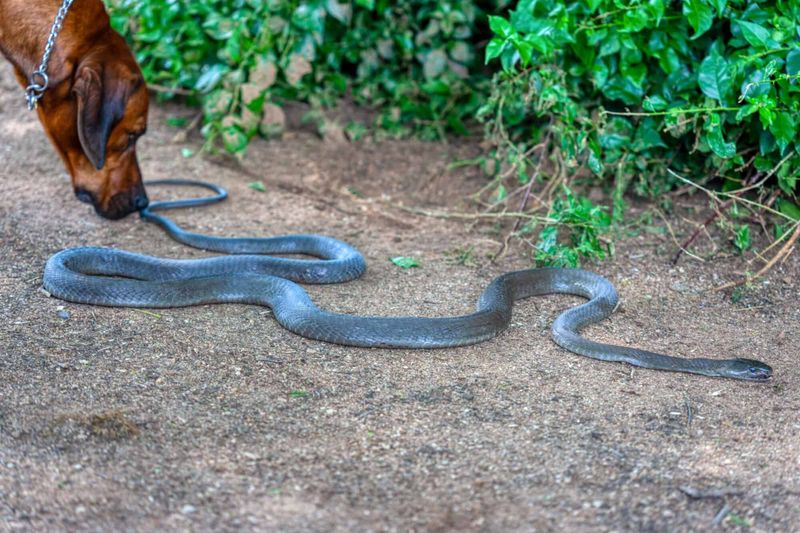
The canine investigation method, nose first, eyes second, puts dogs at terrible disadvantage with venomous snakes.
Scent-driven breeds like hounds and retrievers face particular risk. They follow their noses into trouble before registering danger. Unlike humans who might spot a snake and step back, dogs often push forward to investigate the unusual smell.
Face and neck bites are especially dangerous, causing rapid swelling that can compromise breathing.
Venomous Bites Cause Rapid Damage

Snake venom acts with frightening speed in our four-legged companions. Within minutes, tissue begins swelling and breaking down at the bite site.
The venom prevents blood from clotting properly while simultaneously destroying surrounding tissue.
Neurological symptoms can follow quickly: disorientation, weakness, or even respiratory difficulty. Small dogs face greatest risk, as the same venom dose affects their smaller bodies more severely.
The painful recovery often takes weeks, with some dogs needing skin grafts where tissue died.
Emergency Treatment Costs Thousands
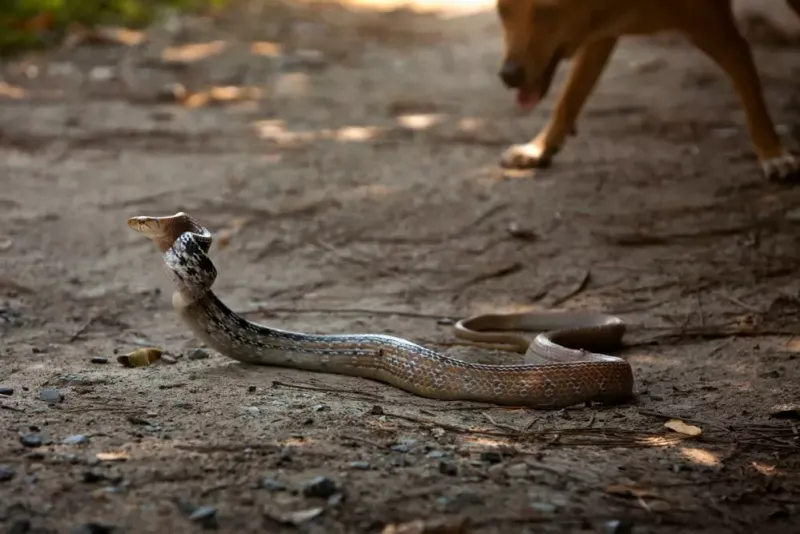
Snake bite treatment will bite your wallet harder than any rattler!
Antivenom costs have skyrocketed, with each vial running $600-$1,000, and most dogs needing multiple doses.
Many rural areas lack 24-hour emergency vets with antivenom stocks, meaning precious time lost traveling to facilities.
Pet insurance often covers only portions of treatment, leaving owners with difficult financial decisions during already stressful emergencies.
Texas Hosts A Venomous Snake Convention
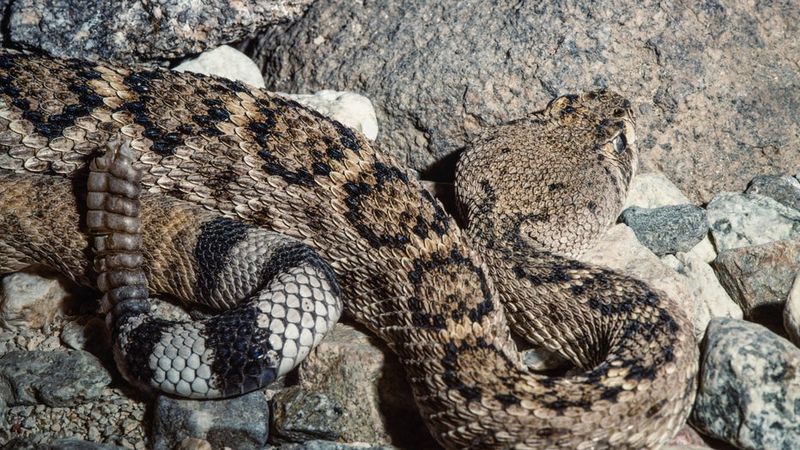
Texas proudly leads the nation in snake diversity with 15 venomous species calling the Lone Star State home. Our venomous lineup includes ten rattlesnake varieties, copperheads, cottonmouths, and the elusive coral snake.
Each region hosts its own specialty. Western Diamondbacks dominate West Texas while timber rattlers prefer East Texas pinewoods. Central Texas gets the worst of all worlds with multiple species overlapping.
Different species require slightly different medical approaches too.
Coral snake bites need specialized antivenom different from pit viper treatments.
Fall Recreation Increases Exposure Risk
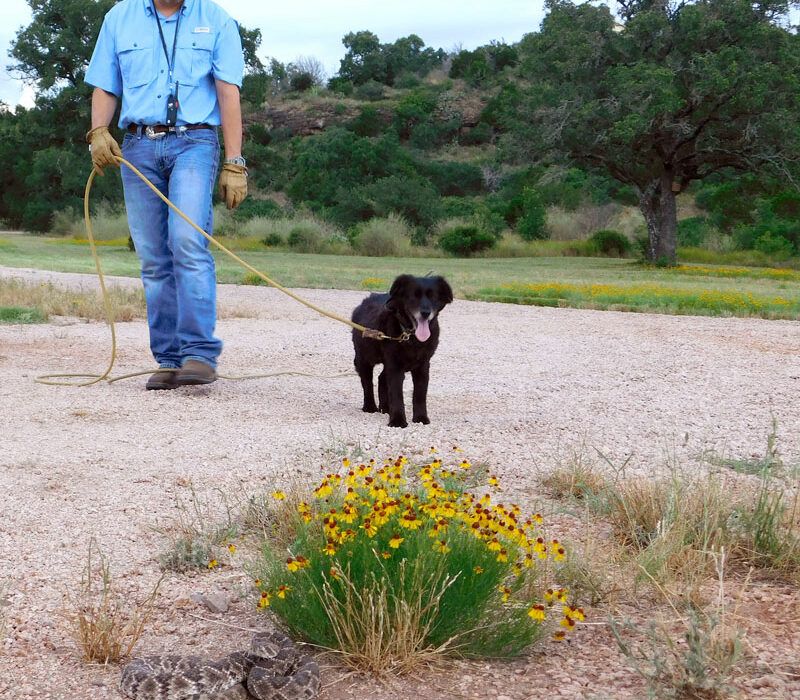
My favorite hiking trails at Pedernales Falls become snake superhighways by late September. Even leashed dogs can encounter snakes on narrow paths where avoidance becomes impossible.
Popular activities like camping, hiking, and fishing all increase potential snake encounters.
Water-loving cottonmouths remain active around lakes and rivers well into late fall, creating hazards for dogs that love swimming. Even urban greenbelt areas see increased snake activity as natural food sources shift.
Urban Expansion Creates New Danger Zones
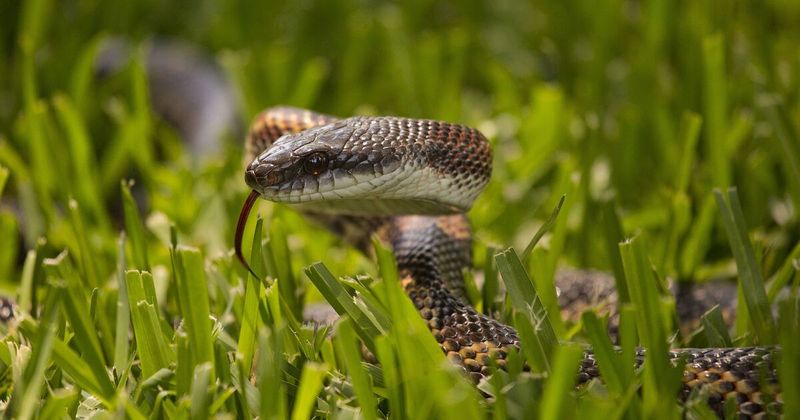
Texas cities sprawl outward yearly, creating prime snake-human-pet conflict zones. New housing developments carve into former snake habitat, temporarily increasing encounters as displaced snakes seek new territories.
Construction debris provides perfect temporary shelter for displaced reptiles.
Even established suburbs experience increased snake activity in fall as animals move toward structures seeking warmth.
Drainage areas, creek corridors, and undeveloped lots become snake highways connecting fragmented habitats. Dogs in edge neighborhoods face heightened risk during morning and evening walks.
